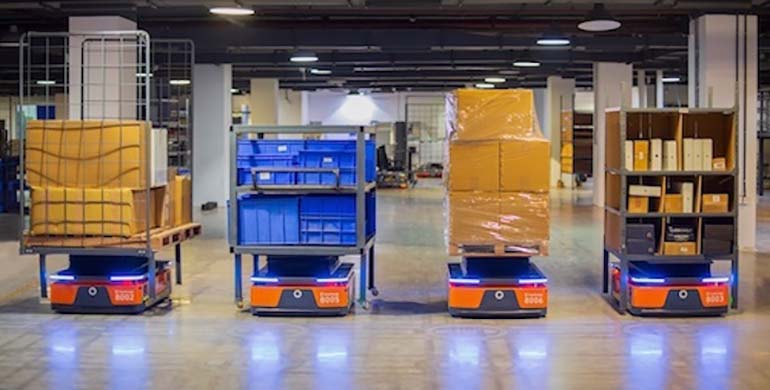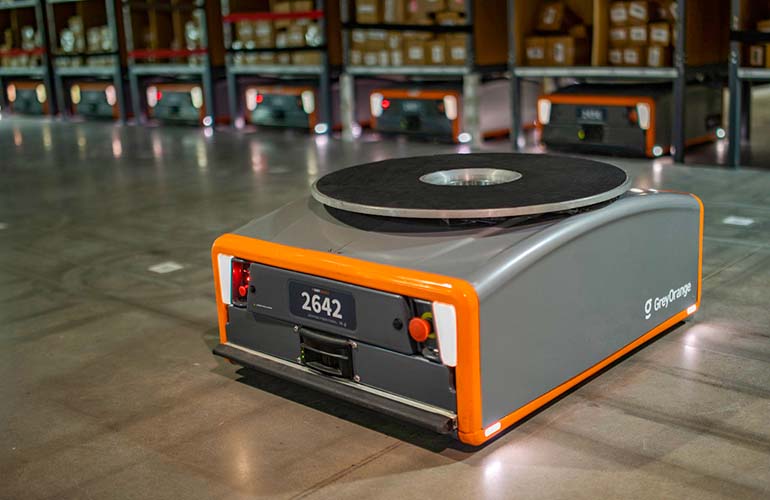From Mobile Robot Guide
By Akash Gupta, CTO, GreyOrange
The pandemic has accelerated consumers’ demand for immediacy when it comes to their online orders, with recent research finding that 45% of consumers across EMEA would be put off from reordering from a brand if their product did not arrive within two days. Such intense demand from consumers is placing modern fulfillment operations under increasing pressure to deliver.
So how can retailers ensure their fulfillment operations are able to meet modern consumer demands in the ‘Age of Immediacy’? They can start by leveraging Artificial Intelligence (AI).
Inventory-in-Motion
In the Age of Immediacy, relegating inventory to static storage can hold brands back. Static storage can lead to products taking longer to reach, pick and pack in the warehouse, making it more difficult to fulfill orders within tight delivery windows. By leveraging AI in the warehouse, brands can keep their inventory moving with Inventory-in-Motion, a decision-making capability that directs warehouse robots to keep products moving to where they need to be at any given time, in sync with customer orders.
Cutting Costs
A 2018 study looking into the greatest challenges faced by modern fulfillment found that the inability to attract and retain a qualified workforce was deemed a significant issue by 55% of respondents, while 44% also cited a lack of sufficient storage in the space as a problem. By integrating AI with robotics, organizations can overcome both of these challenges, while reducing costs at the same time.
With AI-driven dynamic inventory, brands can limit the number of excess products stored in a warehouse and effectively calibrate inventory to order patterns, reducing constraints on space. The need for aisle space between inventory racks also can be eliminated by using Goods-to-Person systems in which robots bring to people working at pick-pack stations inventory stored on mobile racks. These racks can be placed very close together since there is no need for people to access the storage area. Some robots also can coordinate with elevators to reach inventory racks on multiple mezzanines that maximize storage capacity by fully utilizing vertical space.

Similarly, with AI-driven robots assisting warehouse operations, businesses can overcome the labor gap in the fulfillment industry while improving the work experience by reducing heavy lifting, eliminating miles of walking and amplifying productivity by three to four times. By limiting the need for additional space and labor, organizations will inevitably also cut the costs of the overall fulfillment operation.
Operational Efficiency
Modern warehouses are dependent on data. In order to ensure the accuracy, speed and satisfaction demanded by both the wider business and by customers, data needs to be interpreted with pin-point accuracy quickly and in real-time. Human error in interpreting and communicating data often can cause warehouses to slow-down or grind to a halt altogether.
By leveraging AI to interpret warehouse data, organizations not only can reduce the chances of the warehouse experiencing such downtime, but they also can optimize their warehouse operations with accurate automated decision-making. AI automatically identifies, calculates and executes next best decisions for highest yield outcomes in continuous real time across every node of fulfillment. In doing so, organization also are able to get greater visibility into how their warehouse is performing, with AI reporting back on operations.
In the Age of Immediacy, where consumers’ purchasing decisions are centered on their demand for speed from brands, outdated fulfillment technology is no longer fit for purpose. By integrating AI with warehouse robots, organizations can adapt to quickly changing consumer shopping habits, optimize their inventory while also cutting costs and boosting operational efficiency at the same time.
Read full article on Mobile Robot Guide.


